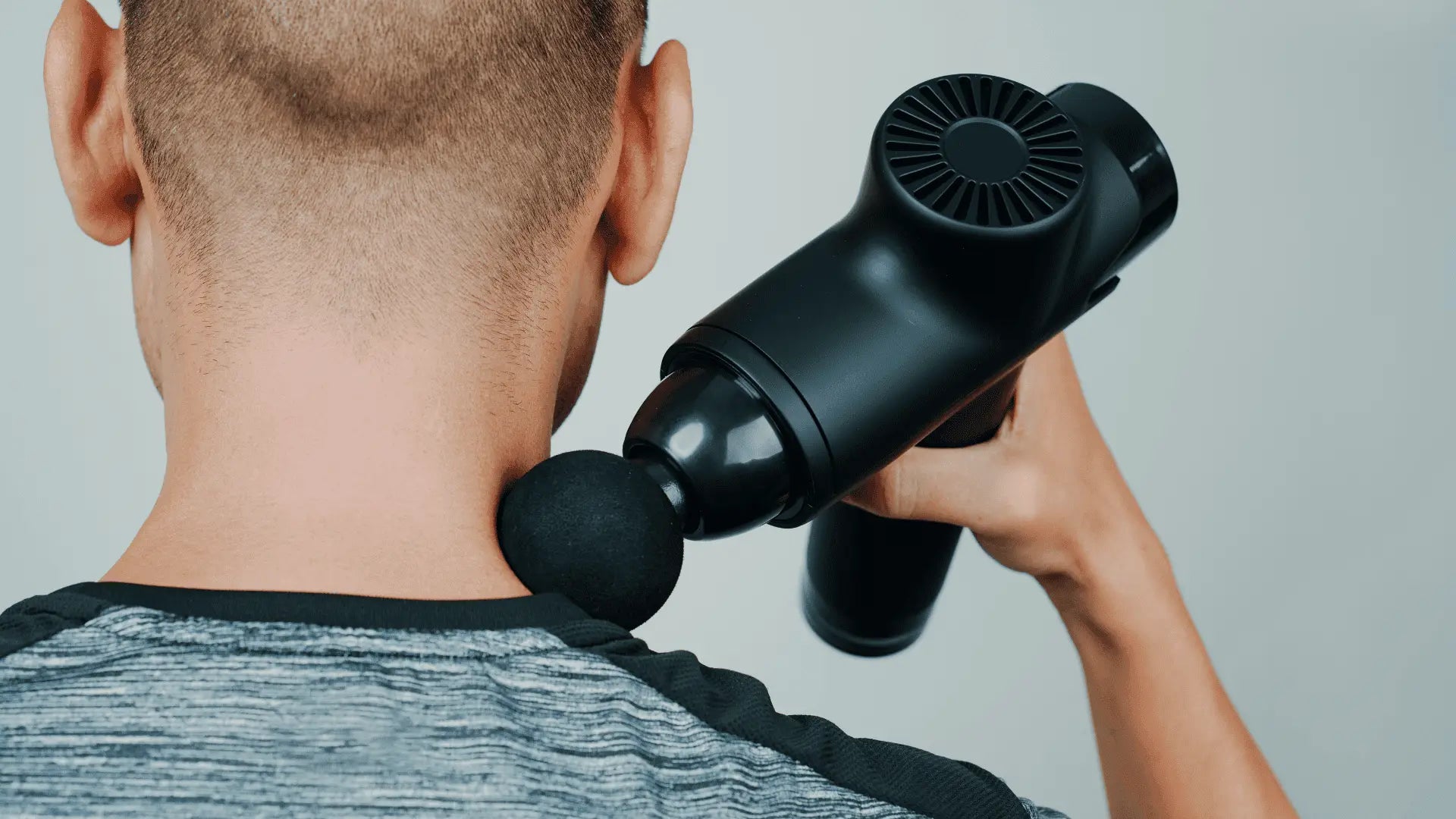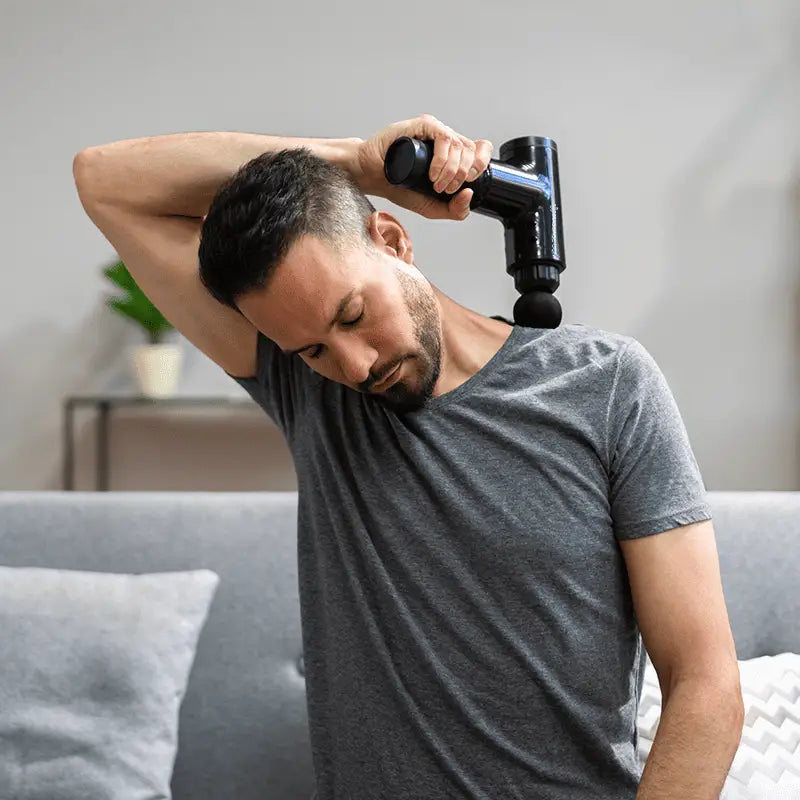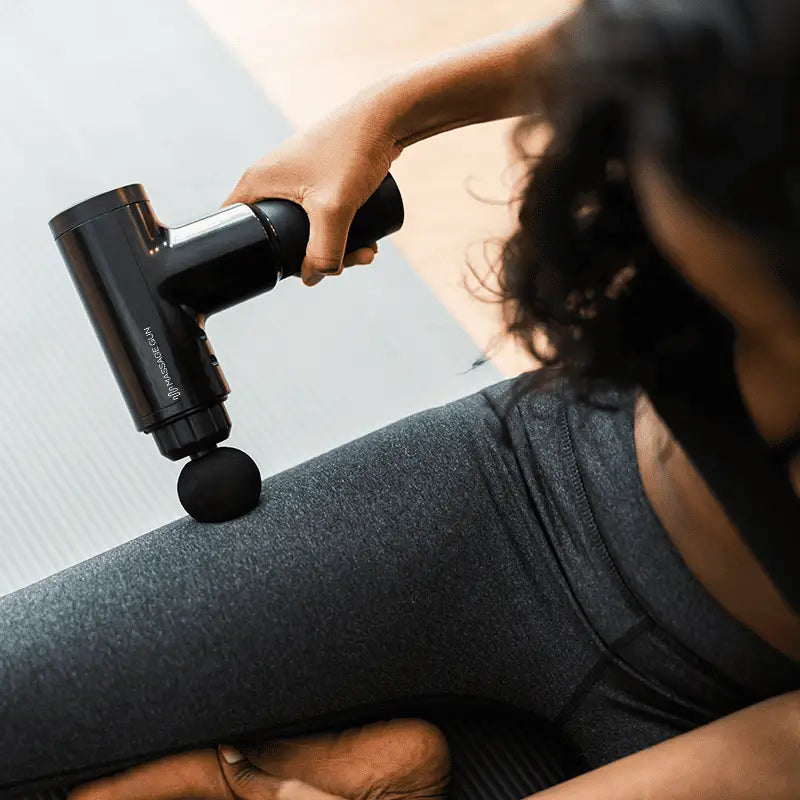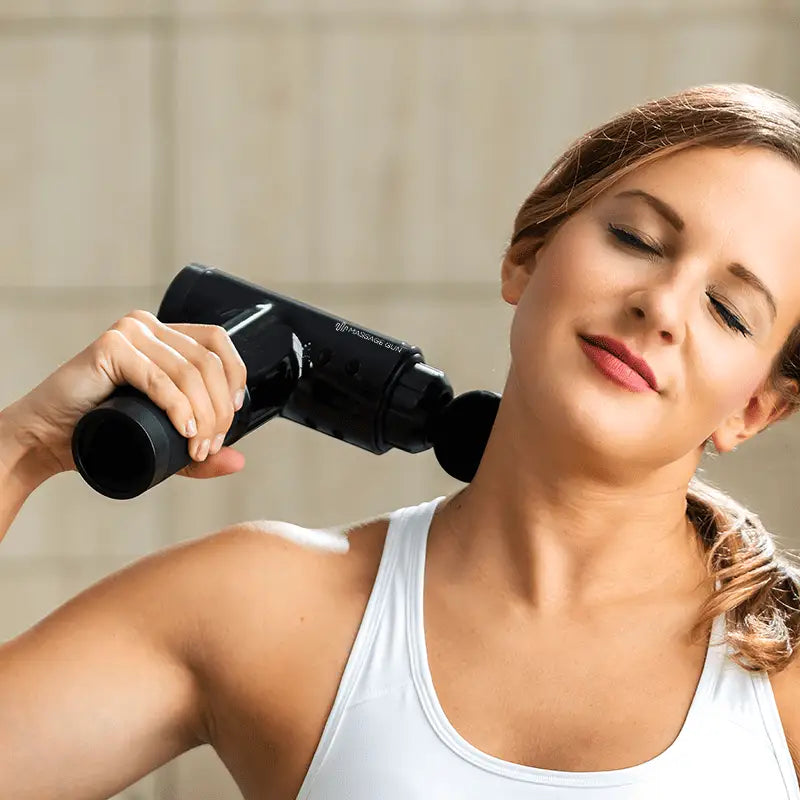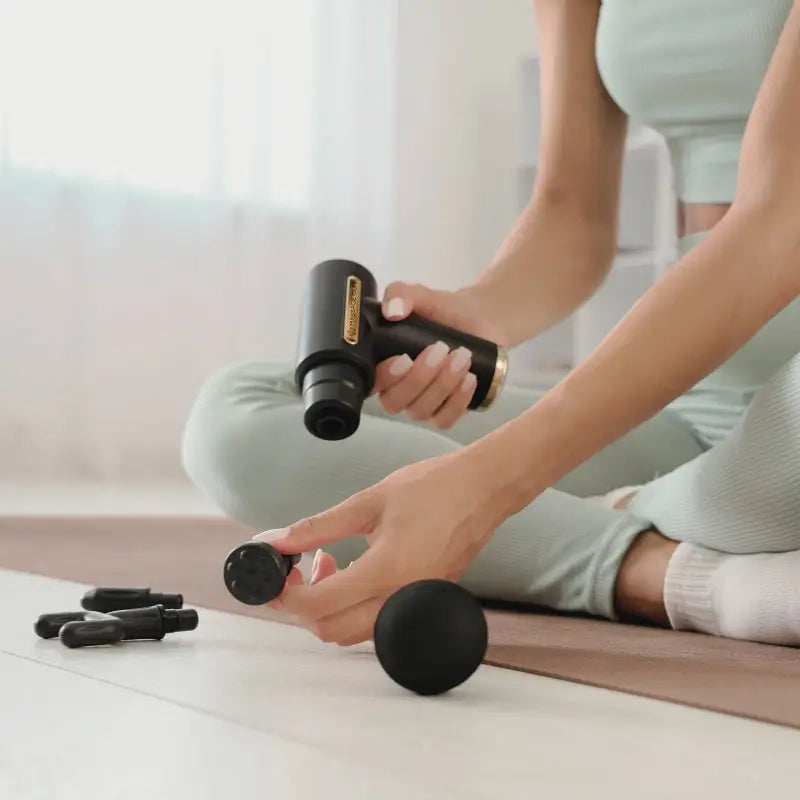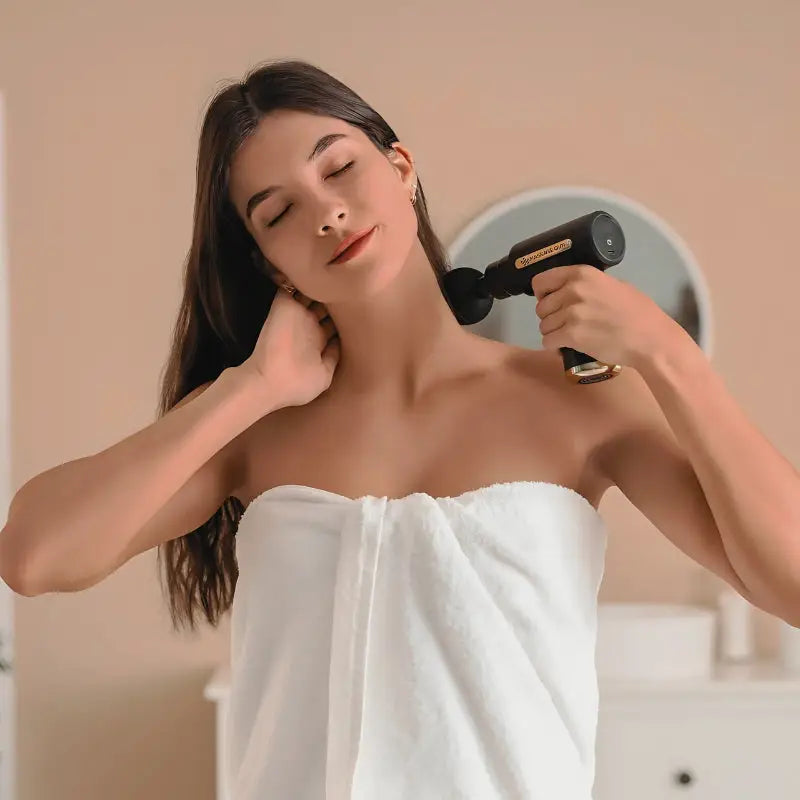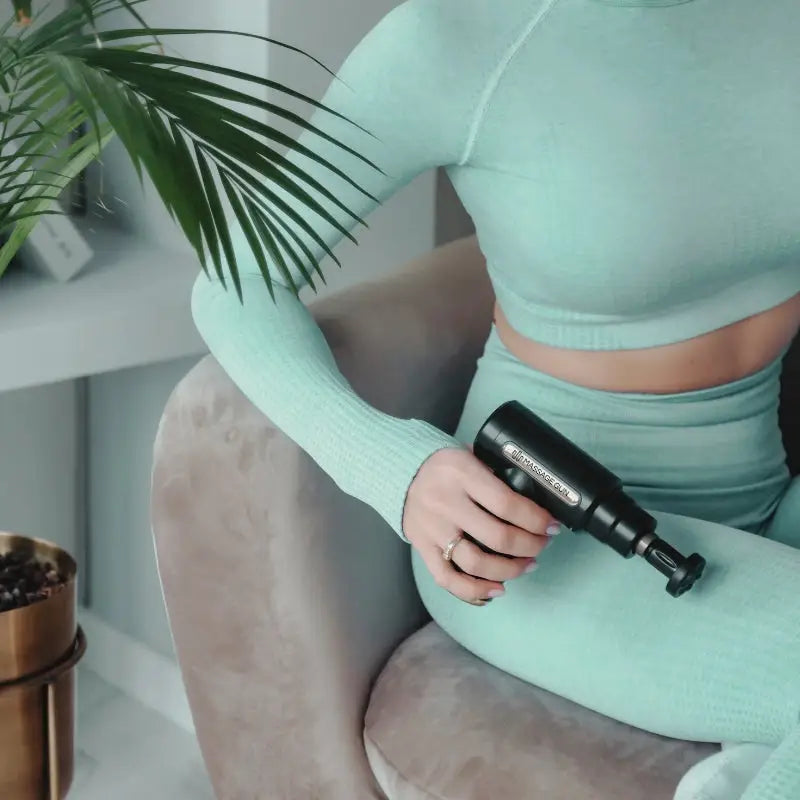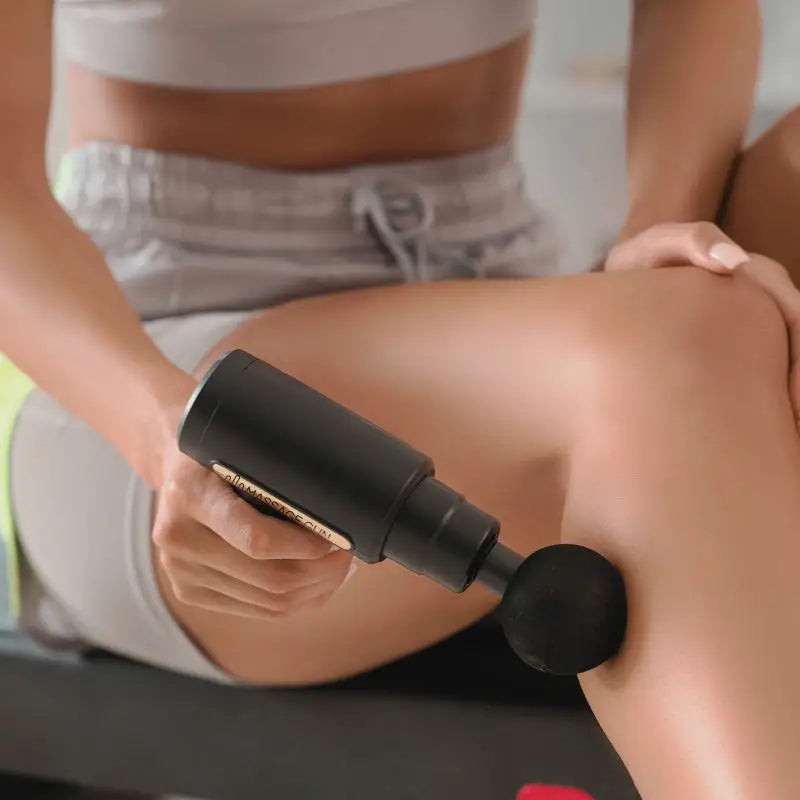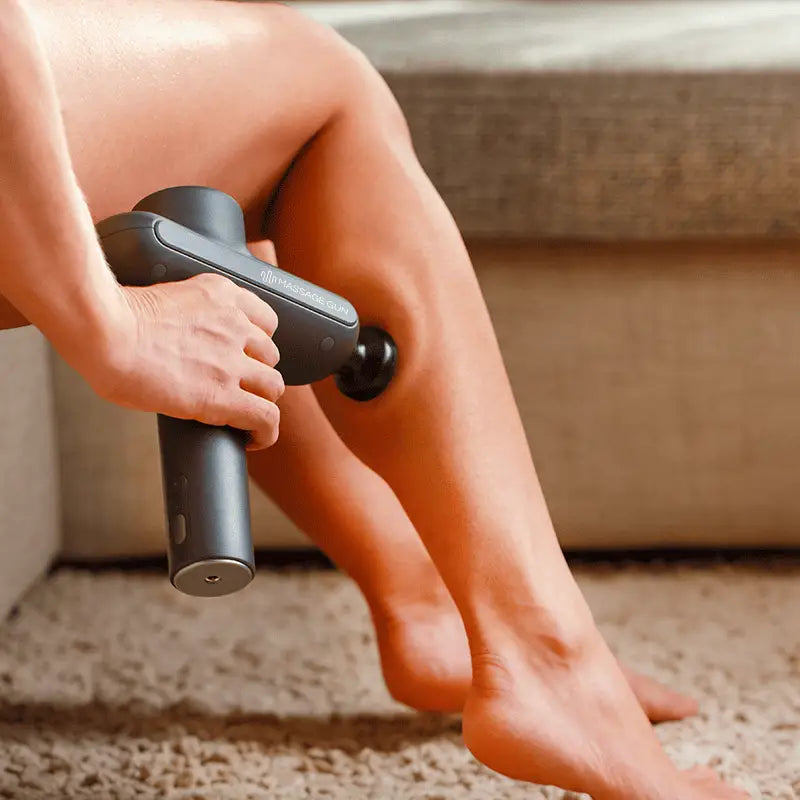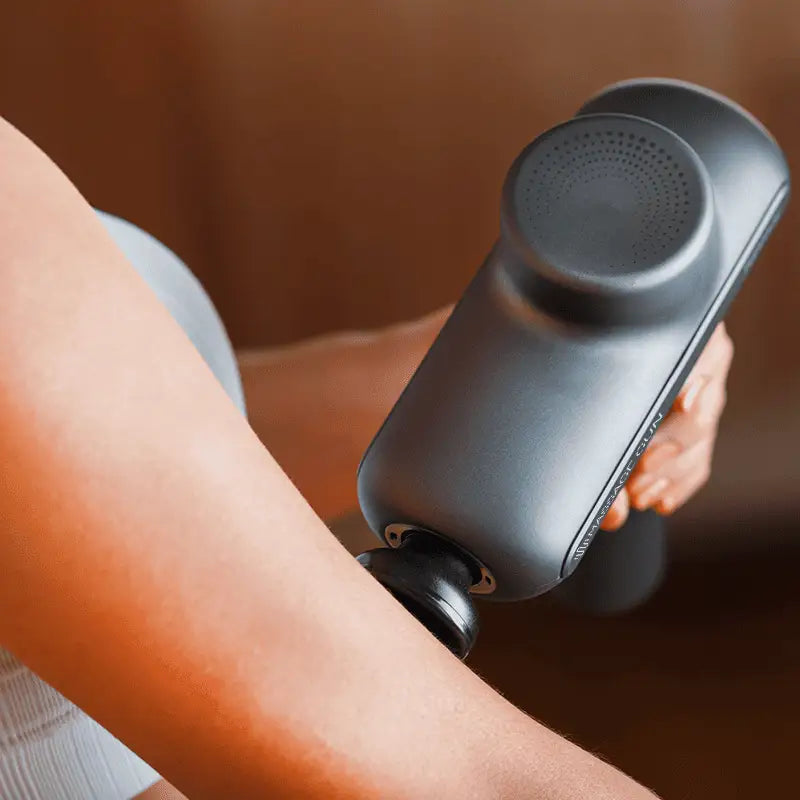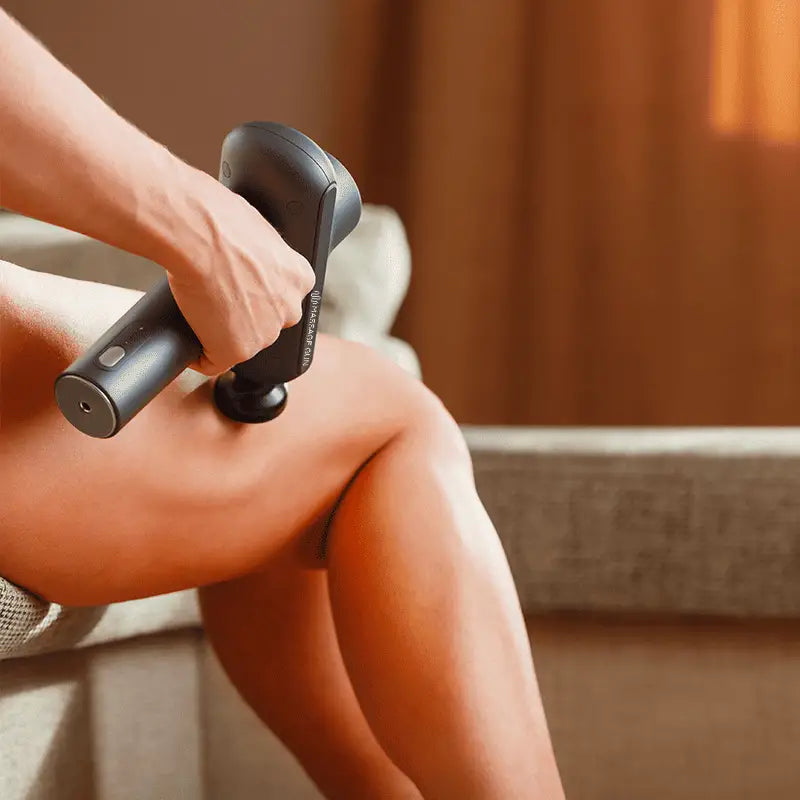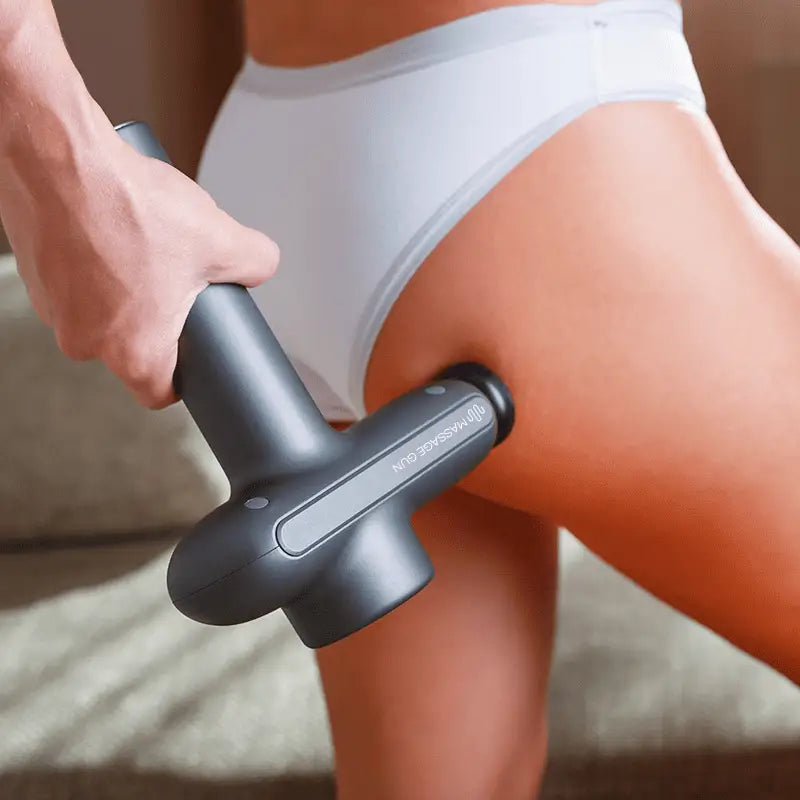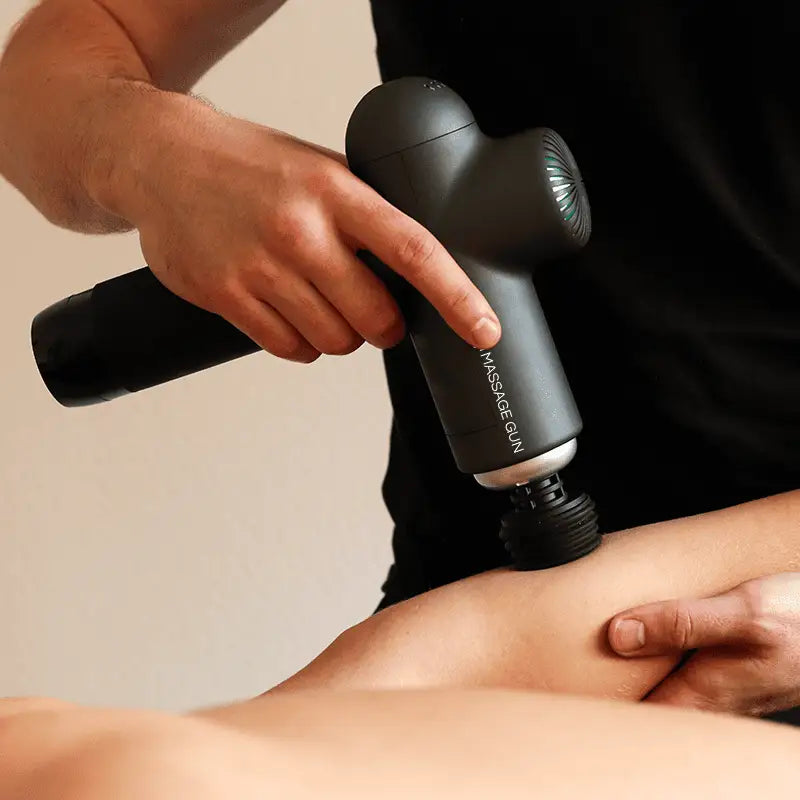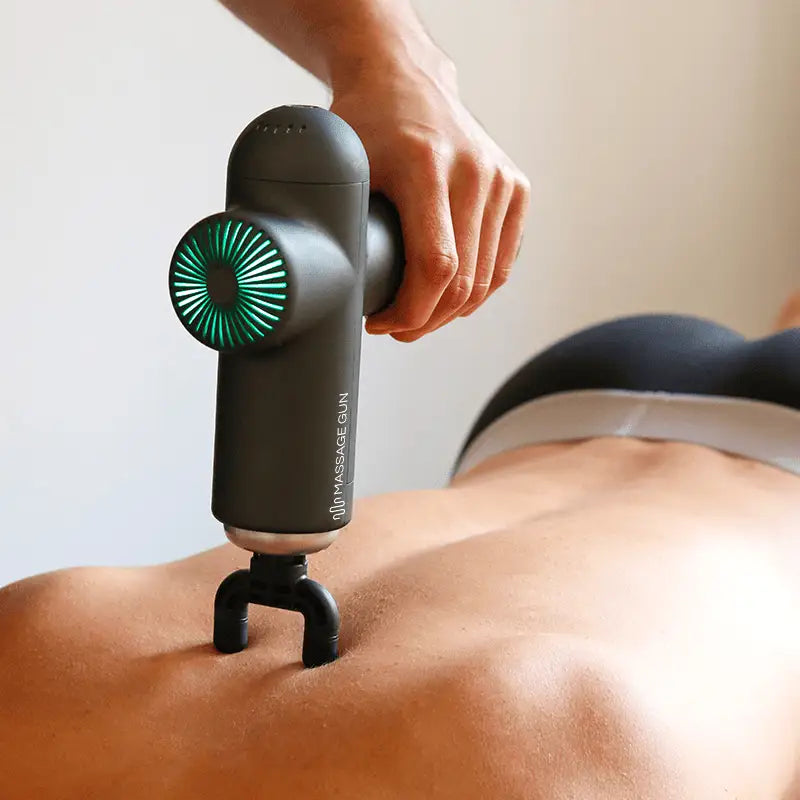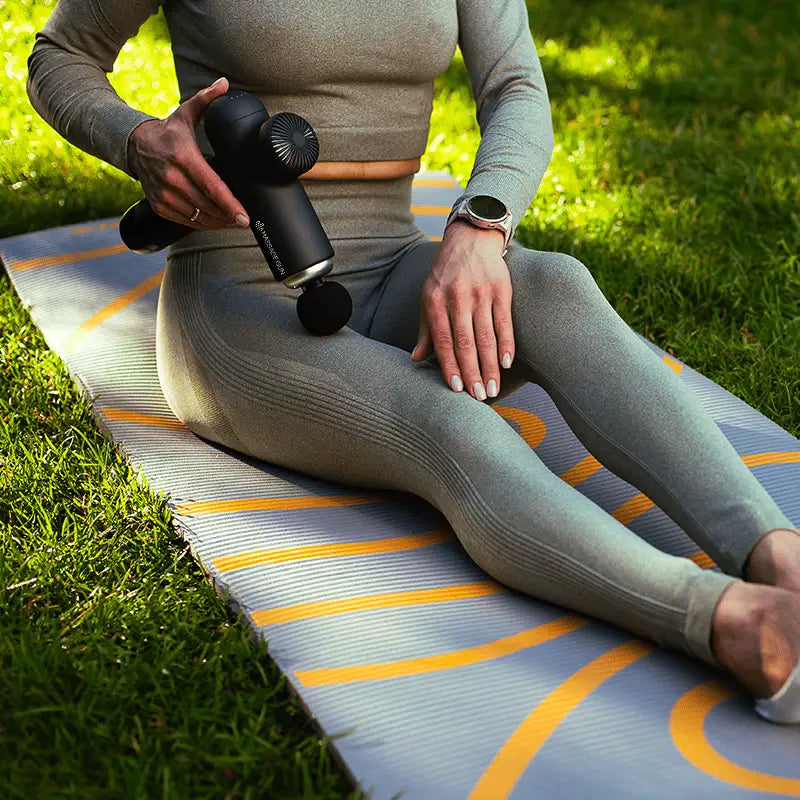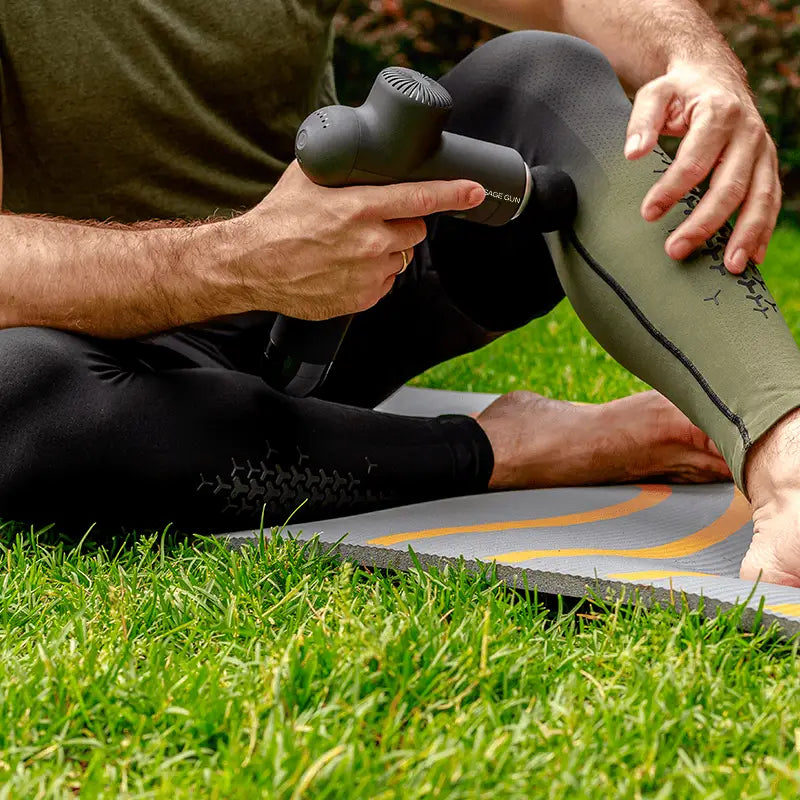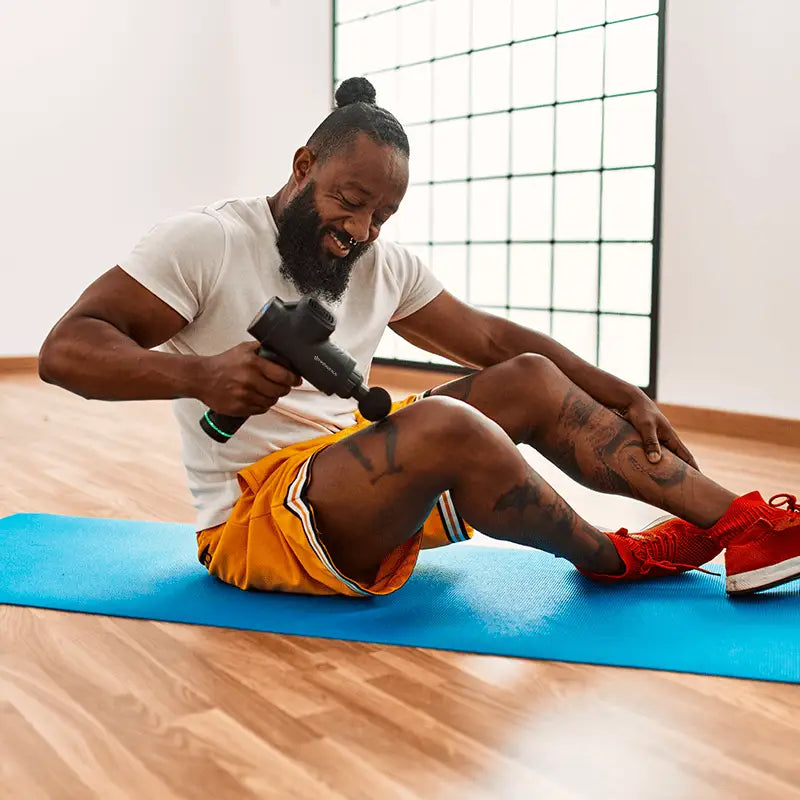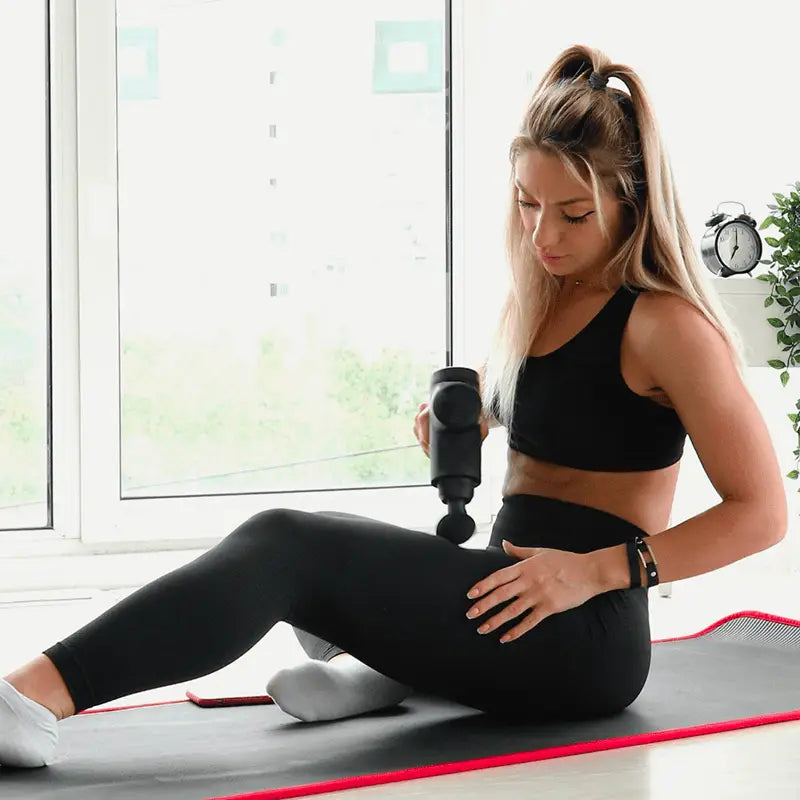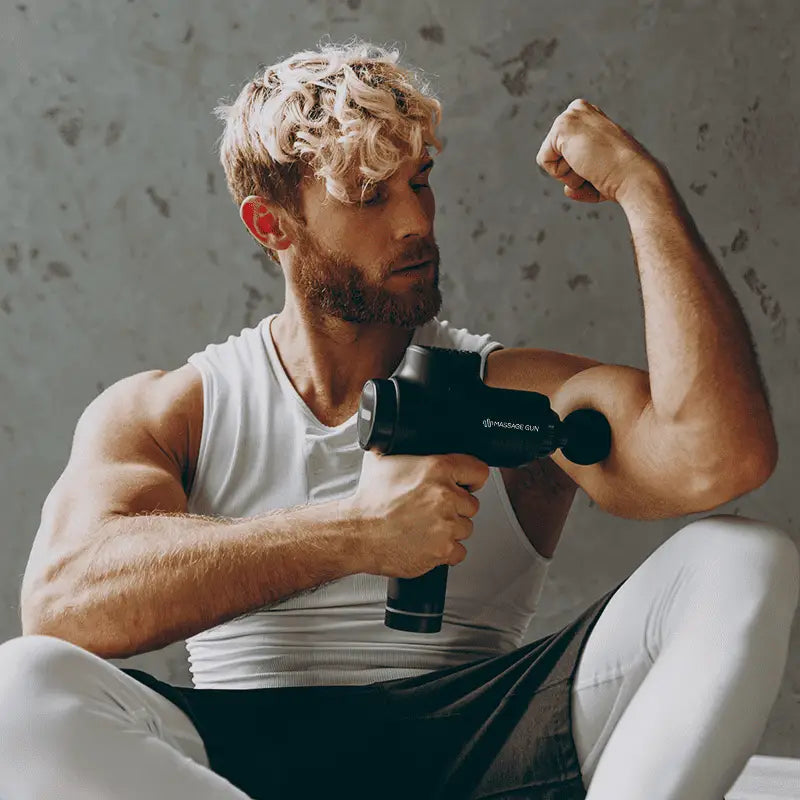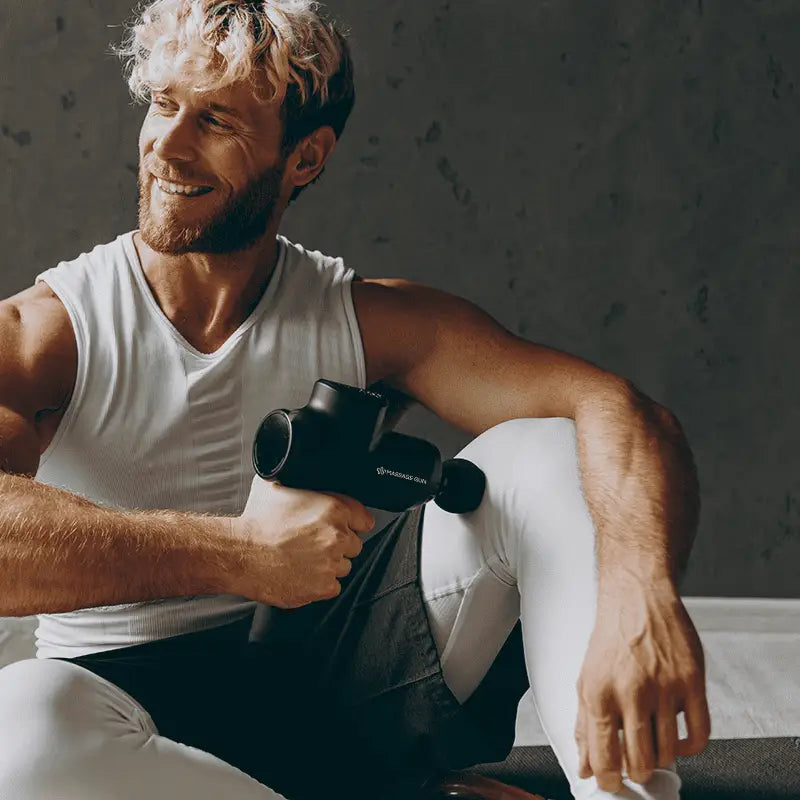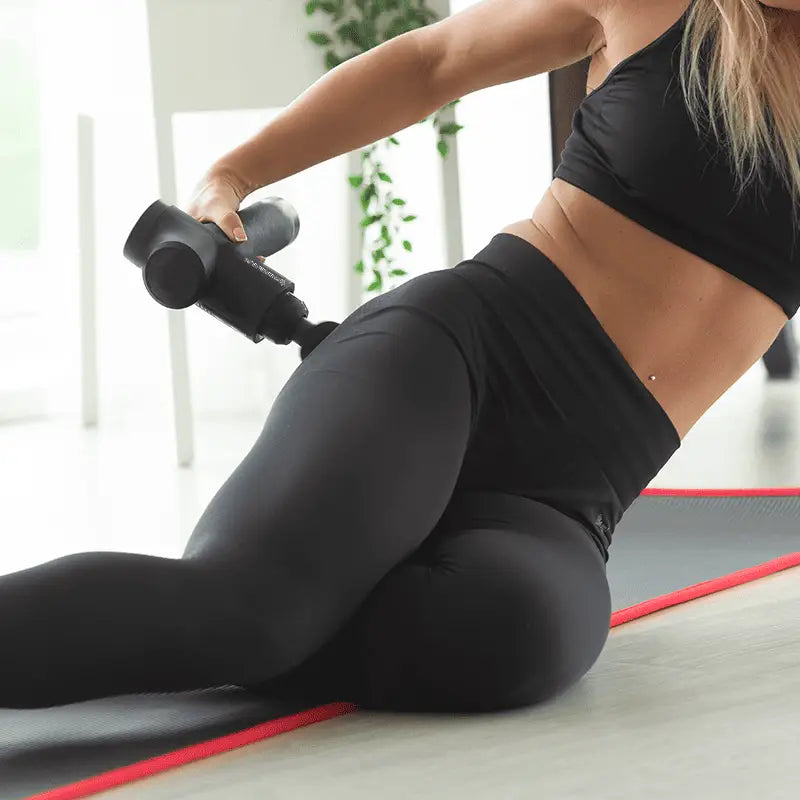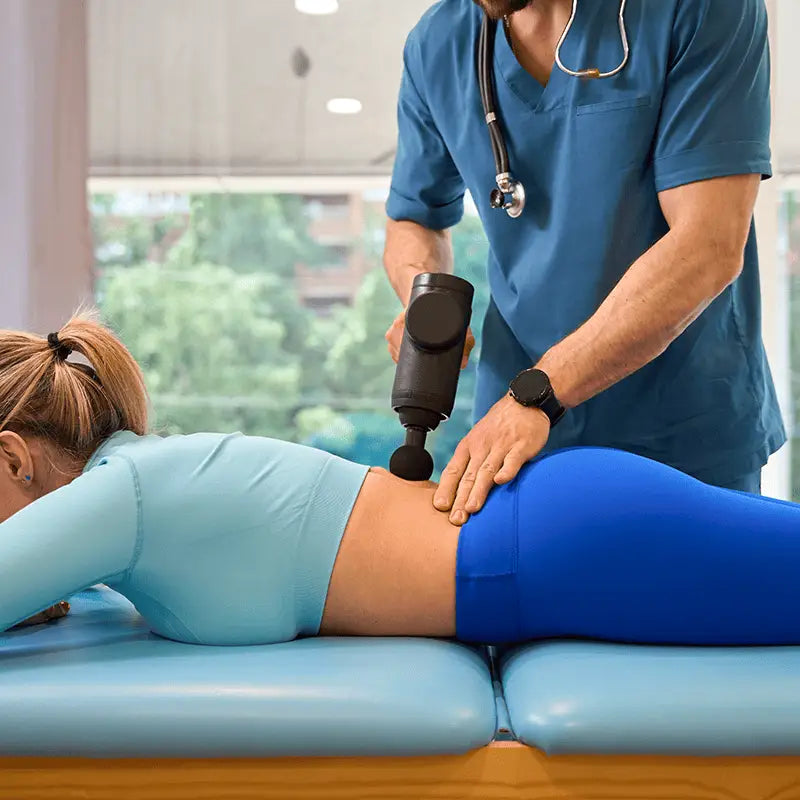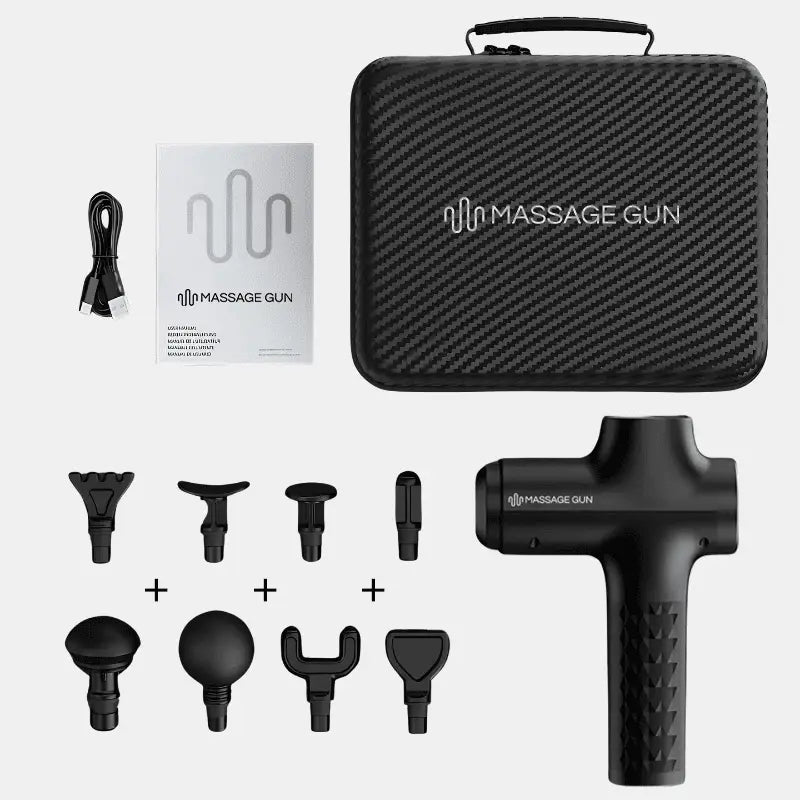Massage guns have gained immense popularity in recent years, especially among fitness enthusiasts and athletes seeking effective recovery methods. With their sleek designs and promises of quick relief, these hand-held devices have become a staple in gyms and wellness routines.
However, the question remains: do massage guns actually work? This article explores the effectiveness of these percussion massagers based on scientific evidence, expert opinions, and user feedback to determine if they are worth the investment for muscle recovery, pain relief, and overall health.
Understanding massage guns
What is a massage gun?
A massage gun is a handheld device that delivers rapid bursts of pressure, known as percussive therapy, to targeted muscle areas. It typically features multiple attachments for different applications, allowing users to customize the treatment for various parts of the body.
The primary purpose of a massage gun is to relieve muscle soreness, tension, and stiffness by stimulating blood flow and enhancing the recovery process.
Many people use these devices for a gentle yet effective body massage, particularly after sports activities or intense workouts. Understanding how these devices function is essential for users to maximize their benefits and incorporate them into their daily routines.
The science behind percussive therapy
Percussive therapy involves the use of rapid, short-duration vibrations that penetrate deep into muscle tissue, mimicking the effects of manual sports massage.
This method aims to promote circulation, decrease muscle stiffness, and improve overall recovery times. Research suggests that percussive massage can stimulate the lymphatic system and the nervous system, leading to increased blood flow and nutrient delivery to the muscles.
Unlike traditional massage techniques that often require a certified massage therapist, massage guns provide users with the freedom to control the intensity and duration of their treatment. This innovative approach to muscle recovery has captured the attention of both athletes and casual fitness enthusiasts alike.
Benefits of massage guns
Enhanced muscle recovery
One of the primary benefits of using a massage gun is its ability to enhance muscle recovery after intense workouts or sports activities. Studies have shown that percussive therapy can significantly reduce delayed onset muscle soreness (DOMS) and muscle stiffness, making it an ideal post-workout tool.
By improving blood circulation, massage guns help flush out metabolic waste products, such as lactic acid, that accumulate during strenuous activities.
This not only speeds up recovery times but also prepares muscles for subsequent workouts, ultimately promoting better overall health. Incorporating massage gun therapy into a regular post-workout routine can lead to improved athletic performance and a reduced risk of injury.
Pain relief and muscle relaxation
Massage guns are also known for their effectiveness in providing pain relief and promoting muscle relaxation. The targeted pressure applied by the device can alleviate tightness and discomfort in specific areas, helping to release tension built up from physical activity or everyday stress.
Many users report experiencing immediate relief after just a few minutes of use, making it a practical option for treating chronic pain or discomfort.
Additionally, the rhythmic pulsations can stimulate the release of endorphins, the body's natural painkillers, further contributing to a sense of relaxation and well-being. This therapeutic application makes massage guns beneficial for people of all ages and activity levels.
Improved range of motion and flexibility
Regular use of a massage gun can lead to improved flexibility and an increased range of motion. By promoting blood flow and reducing muscle tension, massage guns help maintain muscle elasticity, which is essential for overall mobility and injury prevention.
Athletes, in particular, may benefit from enhanced flexibility, as it can contribute to better performance and decreased injury risk. Incorporating vibration massage into warm-up and cool-down routines allows users to prepare their muscles for activity and recover effectively afterward. This proactive approach to muscle care can significantly impact athletic performance and overall physical health.
Pros and cons of using massage guns
Pros
The advantages of using a massage gun are numerous. For one, they offer a time-efficient alternative to traditional massage therapies, allowing users to achieve similar results in a fraction of the time.
Furthermore, the convenience of being able to use a massage gun at home or on the go makes it an appealing option for busy individuals. With various attachments available, users can target specific muscle groups, customizing their experience to suit individual needs.
Many users appreciate the affordability compared to regular massage therapy sessions, making it a cost-effective choice for ongoing muscle care. Testimonials from satisfied users underscore the device's effectiveness in relieving soreness and improving recovery, making them a valuable addition to any fitness regimen.
Cons
While massage guns offer numerous benefits, there are potential drawbacks to consider. One significant concern is the risk of overuse or misuse, which can lead to muscle strain or bruising.
Additionally, massage guns may not be suitable for everyone, especially individuals with certain medical conditions or injuries. It's essential to consult with a physician or healthcare professional before incorporating massage guns into a recovery routine. Another limitation is their inability to target full muscle bellies in large muscle groups effectively.
The initial investment can also be a consideration, as high-quality models may be expensive. Users should weigh these factors before deciding whether to purchase a massage gun, especially considering their own health and safety.
Expert opinions on massage guns
Insights from physical therapists
Board-certified physical therapists have mixed opinions on the efficacy of massage guns, with many acknowledging their benefits for certain populations while also noting limitations. According to experts, massage guns can be helpful for reducing muscle soreness and improving recovery, particularly in athletes.
However, they emphasize the importance of proper usage techniques and timing to avoid potential injuries. Physical therapists often recommend that users incorporate massage guns as part of a broader recovery strategy that includes stretching, hydration, and proper nutrition.
By combining these methods, individuals can optimize their recovery and performance outcomes, making informed decisions based on clinical guidance.
Research evidence
Current scientific literature supports the use of massage guns for muscle recovery and soreness reduction. A range of studies indicates that percussive therapy can effectively enhance blood flow and decrease muscle tension, contributing to faster recovery times.
Research has shown that individuals who use massage guns after exercise report lower levels of muscle soreness compared to those who do not. While some experts caution against relying solely on massage guns for recovery, the evidence suggests they can be a valuable tool when used correctly.
A summary of research findings highlights the potential benefits of massage guns, providing users with a solid foundation for making informed decisions about their use.
How to choose the right massage gun?
Key features to look for
When considering a massage gun purchase, it's essential to understand the key features that contribute to its effectiveness. Look for models with adjustable speed settings to customize the intensity of the vibration therapy, as well as various attachments designed for different muscle applications.
Battery life is another critical factor, as longer-lasting models will provide more extended usage without needing frequent recharging. Weight and portability should also be considered, especially for users who plan to travel with their devices.
By evaluating these features, consumers can select a massage gun that best fits their individual needs and lifestyle, making it a worthwhile investment for daily use.
Price range and value
Massage guns are available at various price points, ranging from budget-friendly options to high-end models. While it may be tempting to opt for the cheapest option, investing in a quality massage gun often pays off in terms of durability and effectiveness.
Higher-priced models typically offer better power, longer battery life, and more features, making them a worthwhile investment for regular users. It's essential to assess what features are most important based on personal needs and usage frequency.
Comparing different models and reading reviews can help consumers make an informed decision that aligns with their budget and recovery goals.
When to use and when to avoid massage guns?
Best practices for use
To maximize the benefits of using a massage gun, it's crucial to follow best practices for effective use. Start by warming up the muscles with light pressure before gradually increasing intensity as needed.
Focus on one muscle group at a time, applying the device for 1-2 minutes before moving to the next area. Avoid using the massage gun over bony areas, joints, or inflamed muscles, as this could cause discomfort or injury.
Regularly clean the attachments to maintain hygiene, and ensure the device is charged for optimal performance. Following these guidelines can enhance the effectiveness of massage gun therapy and promote a safer recovery experience.
Contraindications and cautions
Despite their advantages, there are specific situations where massage guns should be avoided
- Individuals with acute injuries,
- Certain medical conditions (such as deep vein thrombosis)
- Skin conditions should consult a healthcare professional before using a massage gun.
Additionally, if experiencing significant pain or discomfort during use, it's essential to stop immediately. Listening to your body is crucial; if a particular area feels sensitive or painful, it’s better to avoid that spot.
By recognizing when to skip massage gun therapy, users can prevent potential harm and ensure a safer recovery experience.
Conclusion
In conclusion, massage guns offer a range of benefits, including enhanced muscle recovery, pain relief, and improved flexibility. While they can be a valuable addition to a fitness routine, it's essential to understand their limitations and use them properly.
Expert opinions and scientific evidence indicate that when used appropriately, massage guns can significantly contribute to muscle recovery and overall well-being. However, personal needs and medical considerations should guide any decisions regarding their use.
Ultimately, evaluating individual goals and consulting with professionals can help users determine if investing in a massage gun is the right choice for them, considering both the benefits and safety aspects involved.
Frequently asked questions
1. Do massage guns actually work?
Yes, massage guns do work for muscle recovery and soreness relief. They utilize percussive therapy, which delivers rapid bursts of pressure to targeted muscle areas, helping to treat muscle pain effectively. Studies have shown that using a massage gun can help reduce delayed onset muscle soreness (DOMS), improve flexibility, and promote better blood flow.
Many users claim to experience immediate healing effects from tight muscles after just a few minutes of use. This makes them a valuable addition to any fitness routine, particularly for those seeking a practical solution for post workout recovery.
2. What are the benefits of using a massage gun?
Using a massage gun offers several benefits, including enhanced muscle recovery, reduced muscle soreness, improved flexibility, and increased blood flow. They can also help alleviate tightness and discomfort from daily activities or sports.
Many people find that incorporating a massage gun into their post workout routine helps them relax and promotes overall well-being. Regular use can assist in maintaining muscle elasticity, which is essential for preventing injuries and improving athletic performance.
Additionally, these devices can be beneficial for those in need of rehabilitation, such as during covid rehab, where proper muscle care is crucial.
3. Can massage guns replace traditional massage therapy?
While massage guns can provide some of the benefits of traditional massage therapy, they are not a complete replacement. Massage guns are effective for muscle recovery and pain relief, but they lack the personalized touch and comprehensive techniques offered by a licensed massage therapist.
However, for those who seek convenience and affordability, massage guns can be an excellent complementary tool to enhance recovery between professional sessions, particularly for individuals who may not have easy access to a health clinic or physical therapy.
4. How often should I use a massage gun?
It is generally recommended to use a massage gun 2-3 times per week for optimal results, particularly after workouts or intense physical activities. Some individuals may benefit from daily use, especially if they experience muscle tightness or soreness regularly.
Always listen to your body and adjust usage based on your comfort level. For best practices, limit the application time on each muscle group to about 1-2 minutes to prevent overuse injuries. Incorporating a massage gun into your routine can effectively build a comprehensive approach to recovery.
5. Are there any risks associated with using a massage gun?
While massage guns are generally safe for most people, there are potential risks if not used properly. Overuse or excessive pressure can lead to muscle strain, bruising, or soreness, particularly in sensitive areas like the neck or shoulders.
Individuals with specific medical conditions, such as deep vein thrombosis, should consult a healthcare professional before using a massage gun.
Always avoid using the device over bony areas, joints, or inflamed muscles to ensure safety. Following appropriate advice and recommendations is crucial to minimize risks and enjoy the benefits of percussive therapy.
6. What features should I look for when buying a massage gun?
When choosing a massage gun, consider features such as:
- Adjustable speed settings,
- Battery life,
- Variety of attachments,
Adjustable speeds allow users to customize the intensity of the vibration therapy based on their needs, while a longer battery life ensures extended usage without frequent recharging. Look for attachments designed for different muscle groups to maximize the versatility of the device.
Additionally, weight and portability can be essential for users who plan to travel with their massage gun. By focusing on these key features, you can find a high-quality handheld device that meets your needs.
7. Can massage guns help with injury recovery?
Massage guns can aid in injury recovery by promoting blood circulation, reducing muscle stiffness, and decreasing pain. They are often used as part of a rehabilitation strategy, especially for minor injuries or soreness following workouts.
Many athletes and individuals undergoing cancer rehabilitation have found massage guns beneficial for treating soft tissue injuries.
However, it is crucial to consult with a physician or a board-certified physical therapist before using a massage gun as part of an injury recovery program, particularly for serious injuries. Following professional guidance ensures a safe and effective recovery process.
8. How do I use a massage gun properly?
To use a massage gun effectively, start with a warm-up of the muscle area to prepare it for treatment. Choose an appropriate attachment for the targeted muscle group, such as a foam roller attachment for larger muscle areas, and set the device to a lower speed.
Apply the massage gun to the muscle and move it slowly along the muscle fibers, focusing on tight or sore spots for about 1-2 minutes. Avoid using the gun on bony areas or joints, and remember to listen to your body to prevent discomfort or pain.
Following these guidelines can enhance the effectiveness of massage gun therapy while ensuring safety.
9. What is the best time to use a massage gun?
The best time to use a massage gun is after a workout or during your recovery routine. Using it post workout can help reduce soreness and improve blood circulation, facilitating muscle recovery. Some individuals also prefer using a massage gun before workouts to warm up their muscles and enhance flexibility.
However, always ensure proper timing and techniques to maximize benefits while minimizing any potential risks. Consistent use over several hours can lead to increased relaxation and decreased muscle tightness throughout the day.
10. Are massage guns worth the investment?
For many individuals, investing in a massage gun can be worthwhile, particularly for those who regularly engage in physical activities, sports, or workouts. They provide an effective, convenient, and cost-effective means to relieve muscle soreness and promote recovery.
While they may not replace professional massage therapy, they serve as a valuable addition to a fitness regimen, particularly for those looking to enhance their recovery tools without breaking the bank.
With proper use, the benefits can outweigh the initial cost, making them worth the hype for many fitness enthusiasts and casual exercisers alike.


